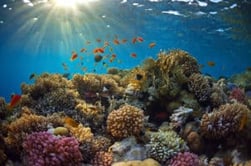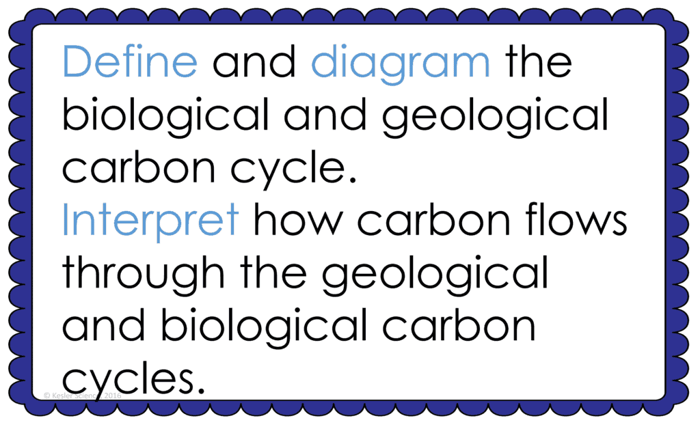
The teacher will help to clear any misconceptions about the carbon cycle. A major misconception is that students don't understand that the carbon cycle is more than one simple cycle, but many cycles that work together to balance the carbon on Earth.
Estimated Class Time for the Engagement: 20-30 minutes
EXPLORATION
This student-centered station lab is set up so students can begin to explore the carbon cycle. Four of the stations are considered input stations where students are learning new information about the carbon cycle and four of the stations are output stations where students will be demonstrating their mastery of the input stations. Each of the stations is differentiated to challenge students using a different learning style. You can read more about how I set up the station labs here.
EXPLORE IT!
Students will be working in pairs to better understand the carbon cycle. In this station, students manipulate cards as they try to match up a picture to the factor within the carbon cycle. Students will follow the steps and record their observations on their lab sheet.
WATCH IT!
At this station, students will be watching a short video explaining the carbon cycle. Students will then answer questions related to the video and record their answers on their lab station sheet. For example: Explain the process of combustion. How are combustion, respiration, and decomposition similar to each other? What are some processes that take CO2 out of the atmosphere?
RESEARCH IT!
The research station will allow students to explore an interactive web page that helps them to understand the carbon cycle by playing a game. Students will be instructed to complete a few tasks and record answers on their lab sheets.
READ IT!
This station will provide students with a one page reading about the geologic carbon cycle. There are 4 follow-up questions that the students will answer to show reading comprehension of the subject.
ASSESS IT!
The assess it station is where students will go to prove mastery over the concepts they learned in the lab. The questions are set up in a standardized format with multiple choice answers. Some questions include: Which is an example of respiration? What role does photosynthesis have in the carbon cycle? Which process(es) add CO2 to the atmosphere? The burning of fossil fuels adds CO2 to the atmosphere. What is this process called?
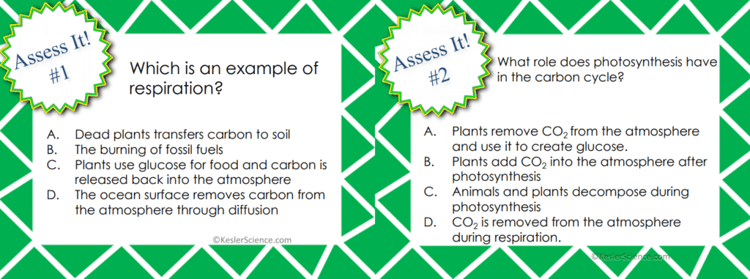
WRITE IT!
Students who can answer open-ended questions about the lab truly understand the concepts that are being taught. At this station, the students will be answering three task cards: Explain the role of photosynthesis in the carbon cycle. Describe two scenarios where respiration can occur. What is the difference between the geological carbon cycle and the biological carbon cycle?
ILLUSTRATE IT!
Your visual students will love this station. Students are to draw a picture that demonstrates their knowledge of the carbon cycle. Their drawing will have labels such as atmosphere, diffusion, respiration, photosynthesis, decomposition, volcanism, combustion, and fossil fuel deposits.
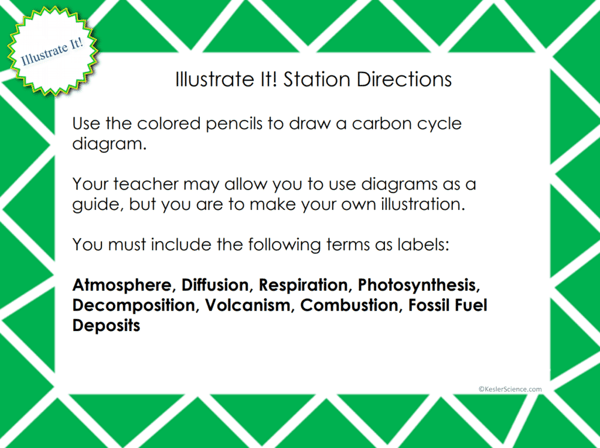
ORGANIZE IT!
Students at this station will match the sets of cards. Sets include a carbon cycle factor with the description. Once students have completed their organization, the teacher will check their understanding.
Estimated Class Time for the Exploration: 1-2, 45 minute class periods
EXPLANATION
The explanation activities will become much more engaging for the class once they have completed the exploration station lab. During the explanation piece, the teacher will be clearing up any misconceptions about carbon cycle with an interactive PowerPoint, anchor charts, and notes. The carbon cycle lesson includes a PowerPoint with activities scattered throughout to keep the students engaged.
The students will also be interacting with their journals while taking notes from the PowerPoint. If you have students that need modified notes, the 5E lessons come equipped to help give every student access to the lesson.
Estimated Class Time for the Exploration: 2-3, 45 minute class periods
ELABORATION
The elaboration section of the 5E method of instruction is intended to give students choice on how they can prove mastery of the concept. When students are given choice the ‘buy-in’ is much greater than when the teacher tells them the project they will have to create. The elaboration project will allow students to create a model, game, technology presentation, or a flip book.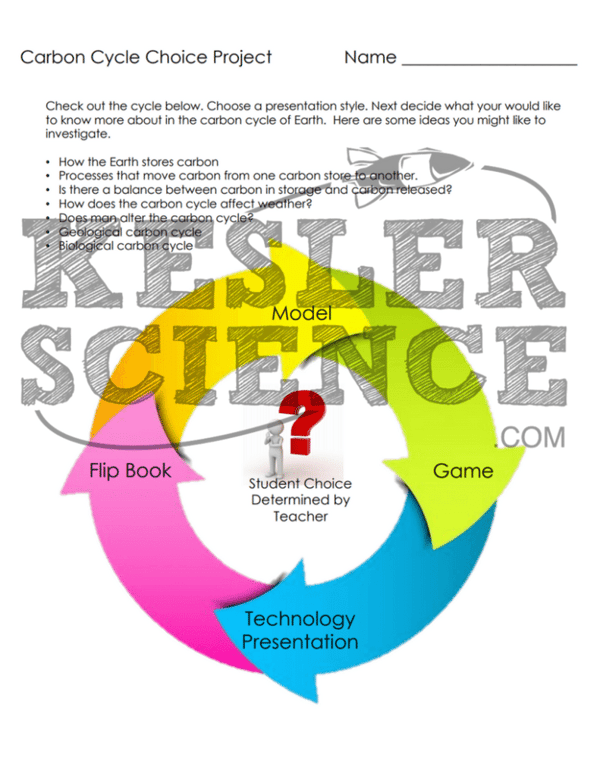 Estimated Class Time for the Elaboration: 2-3, 45 minute class periods (can also be used as an at-home project)
Estimated Class Time for the Elaboration: 2-3, 45 minute class periods (can also be used as an at-home project)
EVALUATION
The final piece of the 5E model is to evaluate student comprehension. Included in every 5E lesson is a homework assignment, assessment, and modified assessment. Research has shown that homework needs to be meaningful and applicable to real-world activities in order to be effective. When possible, I like to give open-ended assessments to truly gauge the student’s comprehension.
Estimated Class Time for the Elaboration: 1, 45 minute class period
DOWNLOAD THE FULL LESSON NOW
The full lesson is available for download from the Kesler Science Store. Save yourself a ton of time and grab it now.


